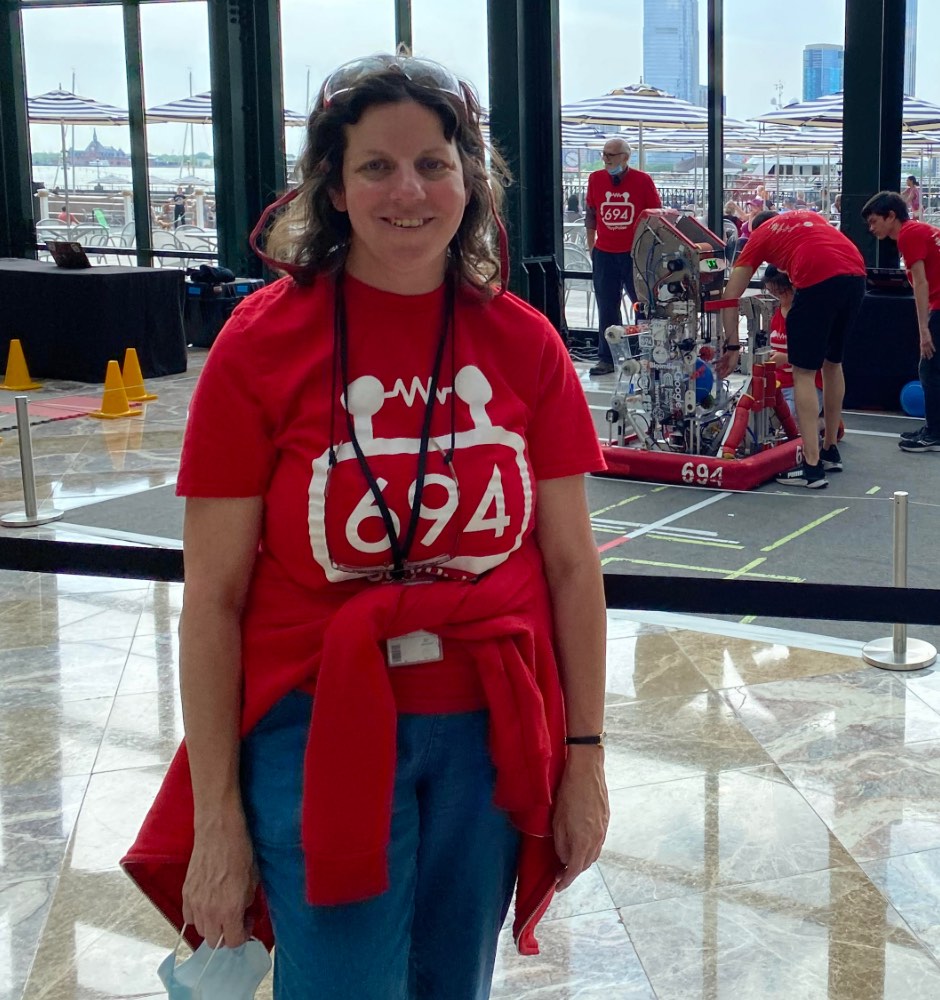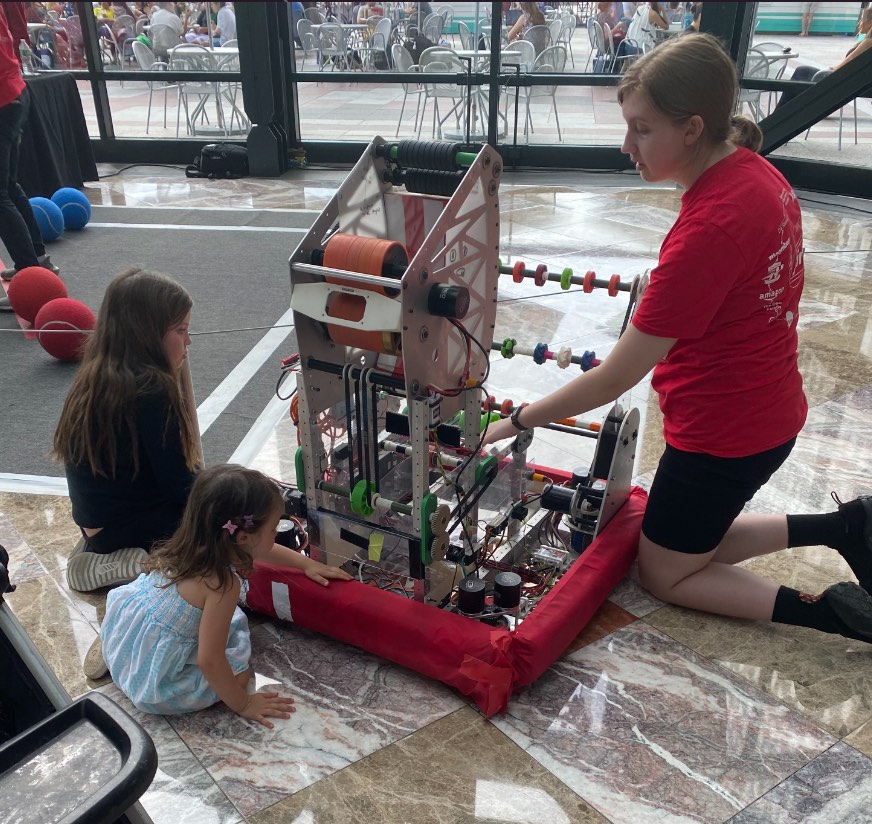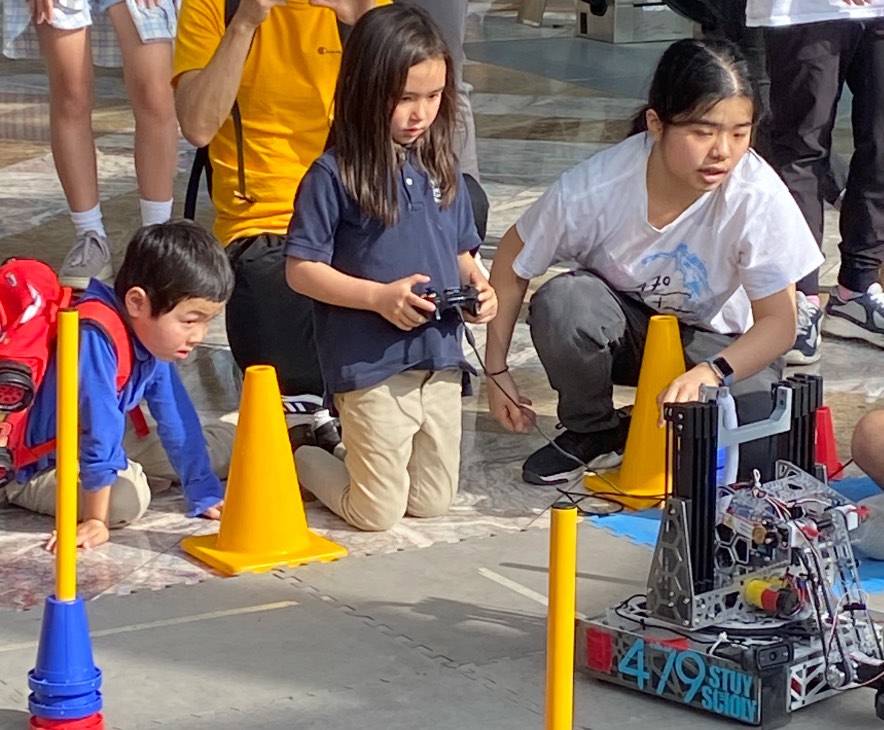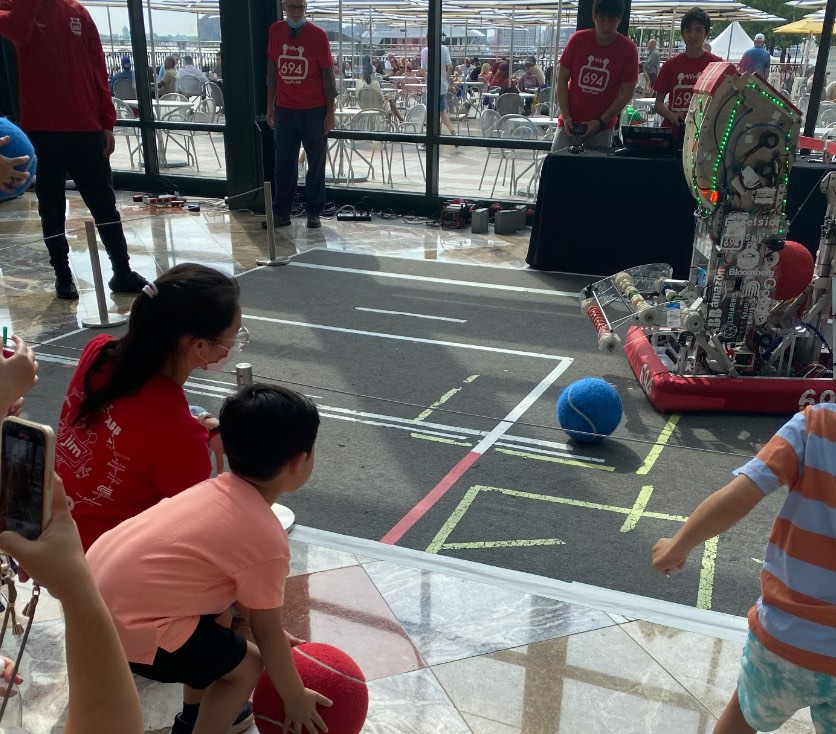FIRST robotics competition team 694 nominated me as their Woodie Flowers Award candidate this year. (I won the Woodie Flowers Finalist Award in 2012 at the NYC regional. That was a long time ago so the essay was completely different).
This award is to celebrate effective communication in the art and science of engineering and design.” The students write an essay about the mentor they nominate. I encourage all teams to submit an essay. Both because “you have to be in it to win it” and also because it is a great way to show your mentor that you appreciate them.
And it definitely worked out that way. I LOVED reading the essay the students submitted today. I got to see the Google doc a few hours before submission. Which included three sections
Part 1: Bullet notes from students brainstorming
I enjoyed reading this part because it let me see what the students were thinking. And also the ideas they had that didn’t make it into the essay due to space constraints. For example, they included “nighttime rehearsals.” I think they were right not to include this in the final essay. But it was still nice to see those practice sessions were appreciated!
Part 2: Quotes from student members about me
This year, the students included some quotes in the essays. Seeing the quotes they came up with draw from was a lot of fun. Some were things I would have recollected. Others were things I didn’t think anything of at the time. For example:
At FLR after 694 won the Impact Award, she made sure to give due credit to PulseCrew and the whole team for making it possible -> makes everyone feel included and part of the team community
I absolutely did this. What I didn’t do is reflect on the impact. Seeing it written down gives me a happy feeling because it shows I included people without thinking about it. And inclusion is one of the FIRST core values, so that’s great!
Part 3: The Essay
As I started reading the essay I immediately smiled. What the students don’t know is that I got that bow in 2018 or so because the girls on the team that year ordered bows as swag. When one of them handed me a bow and asked if I would wear it at competition. I was hesitant. I’m not a frilly/bow person. I said I would wear it to a Saturday meeting and then decide. I did always put my hair up in a half ponytail and the bow felt this same. So I said yes. Then at the NYC regional, a volunteer was looking for me and described me as “the volunteer with the big red bow.” That beats the pants off “the medium height lady with the brown hair.” So the bow became a thing that I wear now. I like that the girls on the team years ago had a transitive impact on a student this year.
A bright red bow, used to mitigate the missing presence of red from StuyPulse’s t-shirt, which was caused by the absolute necessity of wearing the FIRST Volunteer t-shirt instead as the NYC FRC Volunteer Coordinator, seemed to shine and speak to me from the back of Jeanne’s head.
There was so much in the essay that I enjoyed reading. This passage resonated with me because *I* came to the FIRST community from the outside. (I’m not an alum or a teacher or a parent. I found out about FIRST from a public demo 694 around 2008. They told me the event was free. I went and then started volunteering. Then in 2010, Java was a choice of programming language and I started as a mentor.) When I won the Woodie Flowers Finalist Award in 2012, one of the students (Alex) in software asked me “do you feel like a part of the FIRST community.” That was the exact moment where I felt like I did!
Wearing that pink tiara, I felt like a part of the robotics community; watching Jeanne speedwalk throughout the venue keeping order, I felt in awe of the FIRST community, recognizing that there is so much to do, so much dedication and opportunity.
I like that they included things that were important to me. While I don’t know about magic :), I am proud of the fact that they’ve never seen me code for the robot. [I have done work there and I did some writing towards my book in the lab. So they have seen me code. But that’s not robot code]
having never touched the keyboard and instead watched us code while speaking words of advice or magic
Then there were memories from the past. This was a quote from something that happened freshman year for a student who is now a senior. Granted I’ve given other students similar advice. But it’s cool that this student remembers it!
She made me hold paper when I first tried out for impact. ‘If you’re holding something, you can’t put your hands in your pockets and you can’t fidget
And then the ending was great. I’ve always had mixed feelings about women in tech stuff. Like when I got asked to be on a panel, my thought process along the lines of “I wish gender in tech didn’t matter”, “but it does and girls/women need role models”, “I guess I should”…. This sentence resonates for me because I didn’t talk about being a female in STEM. I was me; who was a role model by happening to be female while mentoring on software and awards and just being there.
At competitions I now wear a red bow in my hair, proud to be a girl in STEM and happy to be a part of this FIRST community, with a mentor like Jeanne.
Finally
Thank you to everyone who was involved in the writing of this essay. It means so much to me. The time you spent on writing was very much worth it.




